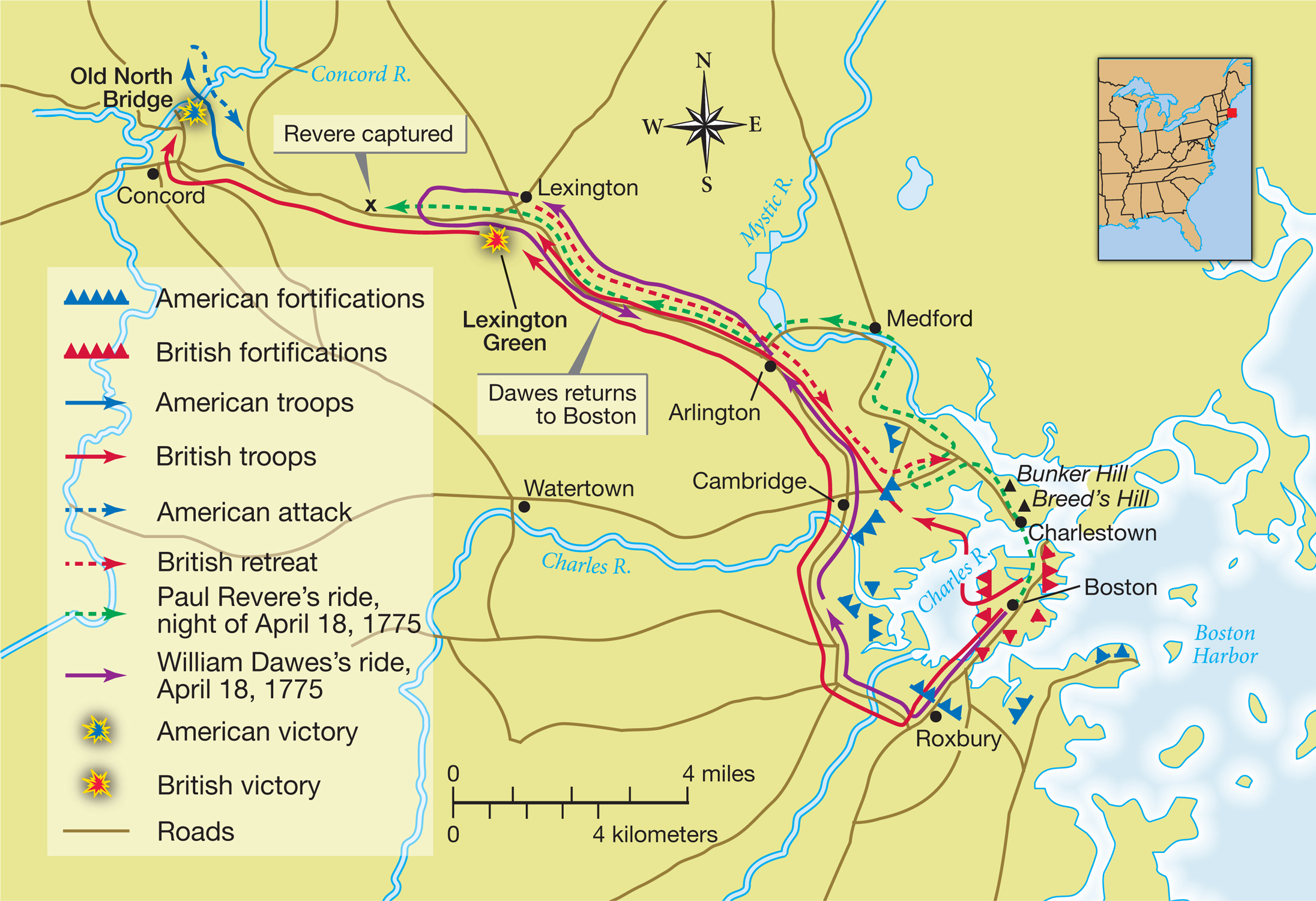Lexington and Concord
During the winter of 1774–75, Americans pressed on with boycotts. Optimists hoped to effect a repeal of the Coercive Acts; pessimists stockpiled arms and ammunition. In Massachusetts, militia units known as minutemen prepared to respond at a minute’s notice to any threat from the British troops in Boston.
Thomas Gage realized how desperate the British position was. The people, Gage wrote Lord North, were “numerous, worked up to a fury, and not a Boston rabble but the freeholders and farmers of the country.” Gage requested twenty thousand reinforcements. He also strongly advised repeal of the Coercive Acts, but leaders in Britain could not admit failure. Instead, in mid-April 1775, they ordered Gage to arrest the troublemakers immediately, before the Americans got better organized.
Gage quickly planned a surprise attack on a suspected ammunition storage site at Concord, a village eighteen miles west of Boston (Map 6.3). Near midnight on April 18, British soldiers moved west across the Charles River. Paul Revere and William Dawes raced ahead to alert the minutemen. When the soldiers got to Lexington, five miles east of Concord, they were met by some seventy armed men. The British commander barked out, “Lay down your arms, you damned rebels, and disperse.” The militiamen hesitated and began to comply, but then someone—nobody knows who—fired. Within two minutes, eight Americans were dead and ten were wounded.

MAP ACTIVITY MAP 6.3 Lexington and Concord, April 1775 Two Americans slipped out of Boston to warn of a surprise British attack on Concord. Paul Revere went by boat to Charlestown and then by horse to Lexington, while William Dawes casually rode past British sentries and then galloped at full speed through Lexington to Concord. READING THE MAP: How did Dawes’s route differ from Revere’s? What kinds of terrain and potential dangers did each man face during his ride, according to the map? CONNECTIONS: Why send two men on the same mission? Why not send four or more?
The British units continued their march to Concord, any pretense of surprise gone. Three companies of minutemen nervously occupied the town center but offered no challenge to the British as they searched in vain for the ammunition. Finally, at Old North Bridge in Concord, British troops and minutemen exchanged shots, killing two Americans and three British soldiers. As the British returned to Boston, militia units ambushed them, bringing the bloodiest fighting of the day. In the end, 273 British soldiers were wounded or dead; the toll for the Americans stood at about 95. It was April 19, 1775, and the war had begun.

VISUAL ACTIVITY The British Retreat from Lexington and Concord, April 19, 1775 Two self-trained artists—Ralph Earle, eighteen, and Amos Doolittle, twenty-one—hustled to Concord and Lexington ten days after April 19 to interview witnesses and create engravings for mass production. This scene depicts the British retreat to Boston, with the redcoats under ambush by American insurgents. On route, the British set fire to several houses. The Granger Collection, New York. READING THE IMAGE: Who is firing from behind the stone wall? Which side is inflicting the most damage, as depicted in this picture? CONNECTIONS: In 1774 and 1775, were American militia units up to the task of defending their country against an invasion by Britain?

